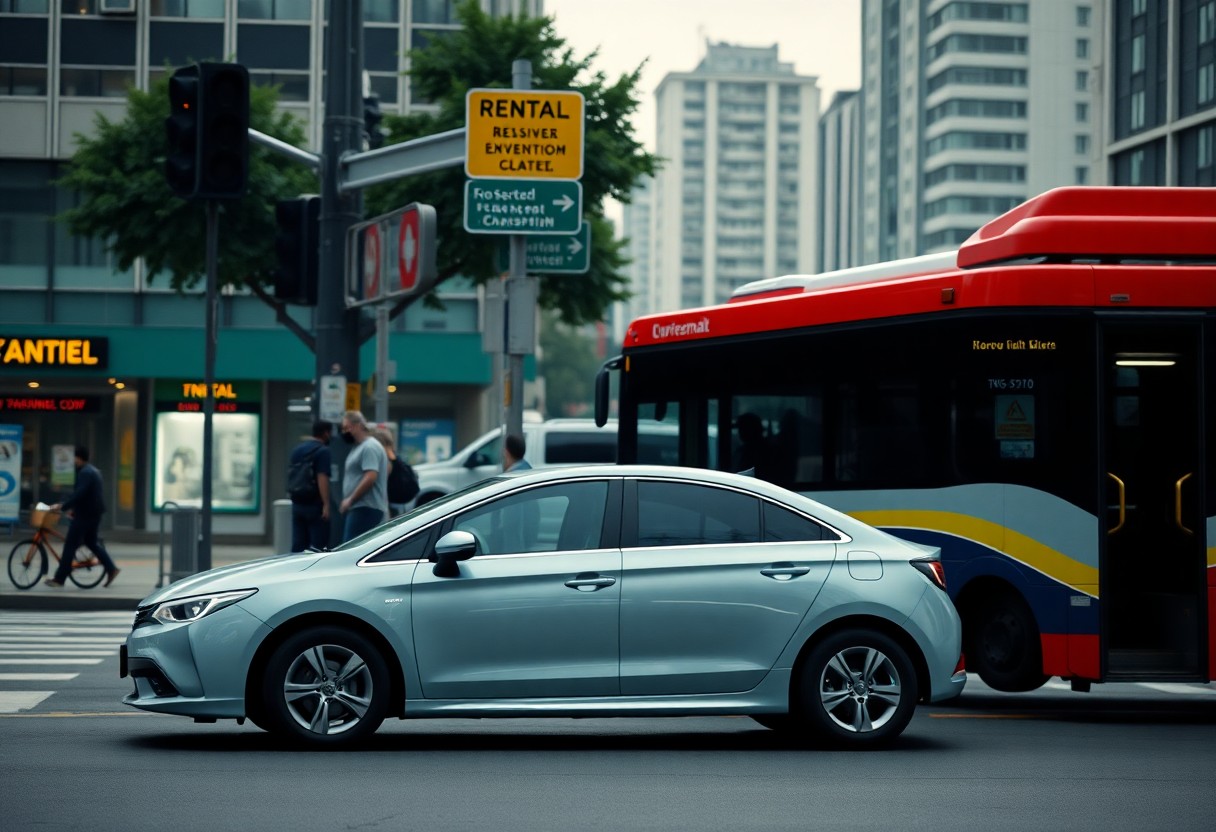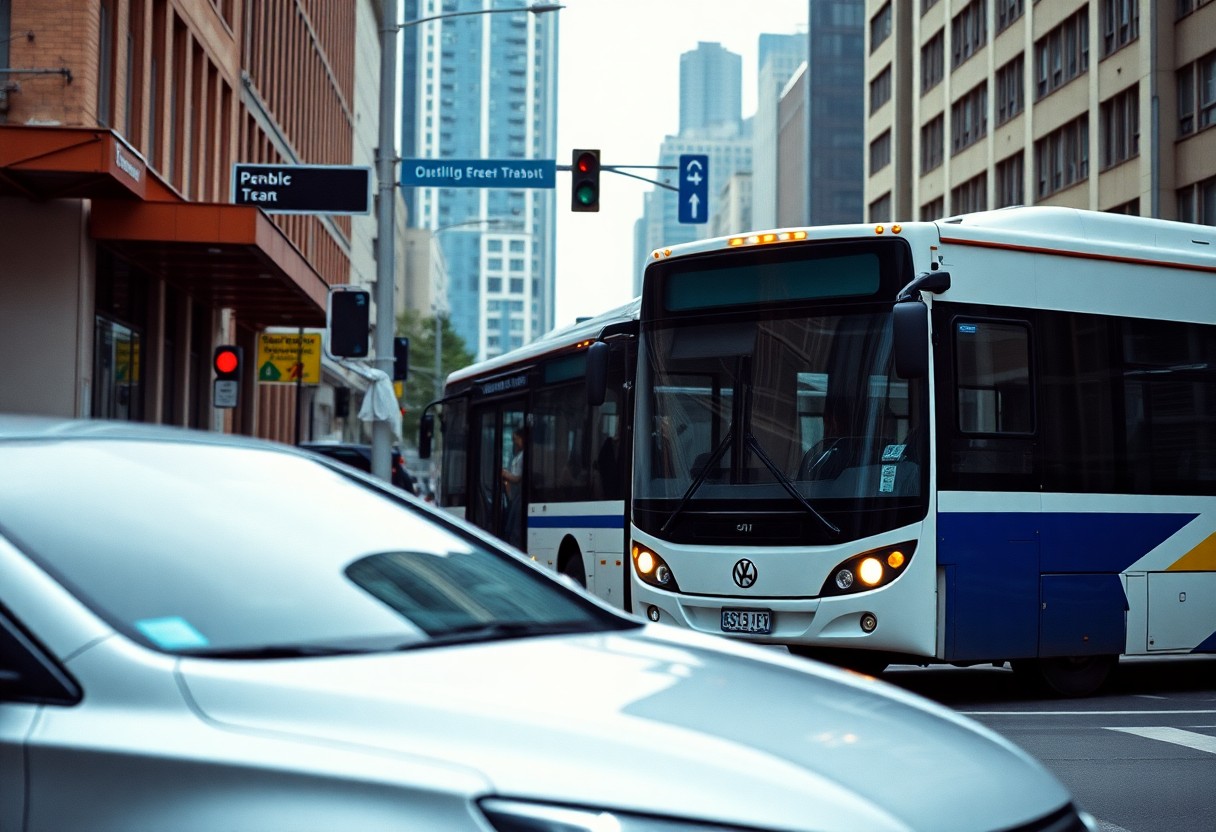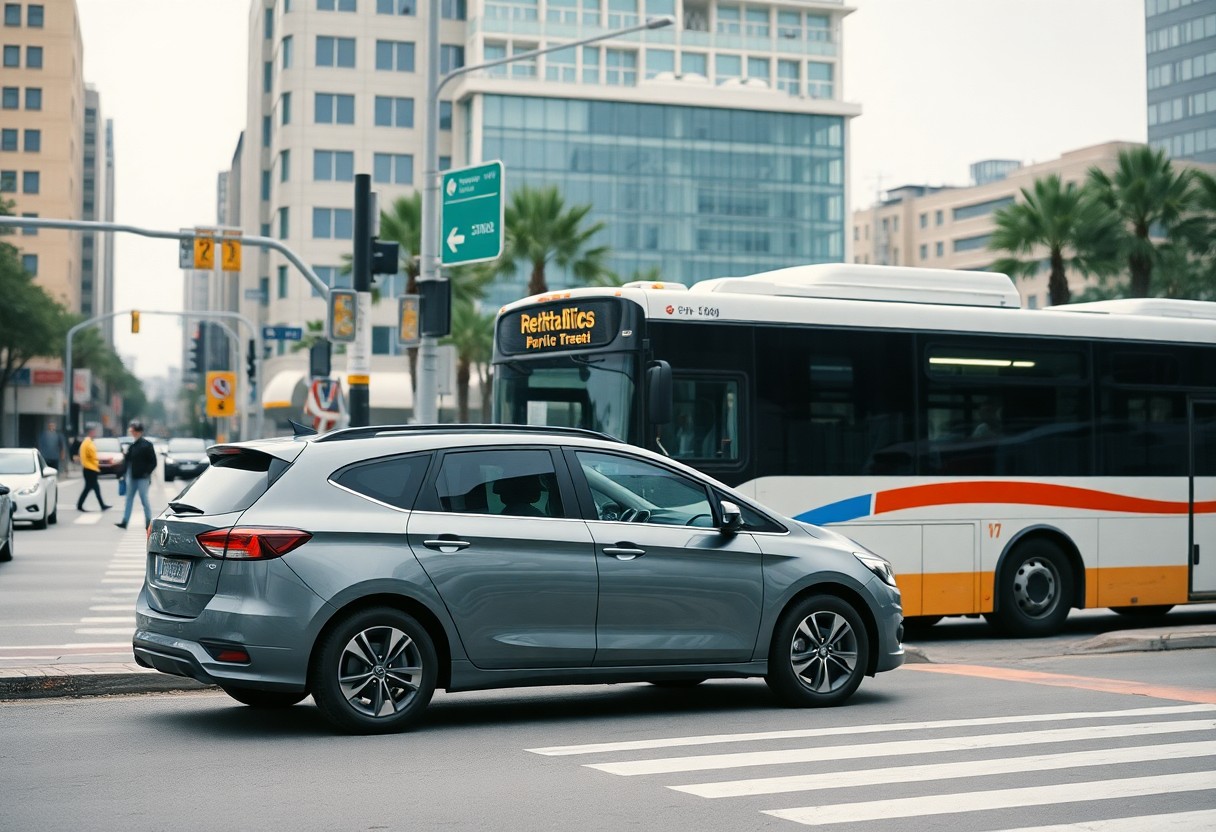As travel expenses continue to escalate and personal time becomes increasingly precious, selecting the optimal transportation method for your journey is crucial, impacting both your financial budget and overall travel experience. When planning your next adventure, you’ll encounter a decision between the freedom provided by a rental car and the affordability offered by public transportation. Your choice will hinge on a variety of factors, including your travel destination, itinerary, and the number of people accompanying you. This comprehensive guide is designed to assist you in examining the essential considerations, ranging from hidden rental fees to the accessibility of public transport, ensuring that you make the most well-informed decision tailored to your unique travel requirements.
Unlock Unmatched Travel Flexibility with a Rental Car
The independence that comes with having your own rental vehicle unlocks a vast array of travel opportunities. By opting for a rental car, you gain complete control over your itinerary and can venture to destinations that go beyond the typical tourist attractions. Recent studies indicate that 73% of travelers prefer rental cars due to their ability to adapt plans spontaneously, making this option particularly appealing for those who cherish autonomy throughout their journey. Imagine the thrill of exploring hidden gems and scenic routes at your own pace, creating unforgettable memories without the constraints of public transit schedules.
Weighing the Pros and Cons of Choosing Rental Cars
Once you secure your rental vehicle, you’ll experience both newfound freedoms and certain limitations. You have the ability to explore remote areas and modify your schedule as you wish, but it’s essential to keep in mind potential parking fees (which can average between $25-45 daily in bustling urban centers) and the possible navigation hurdles you may face. Your rental car transforms into a personal retreat, yet you will also be responsible for managing fuel expenses and navigating through traffic conditions on your own. This balance of freedom and responsibility is a crucial aspect to consider when deciding if a rental car aligns with your travel style and needs.
Revealing Hidden Costs and Discovering Unexpected Savings
While the freedom of a rental car does come with a price, it can also lead to unforeseen advantages. Although initial rental fees may appear steep, it’s important to realize that group travel can often be more economical compared to purchasing individual public transport tickets. Recent statistics reveal that families of four or more typically enjoy savings of 15-20% on transportation costs by selecting a rental vehicle over public transit options. This financial efficiency can make a significant difference in your overall trip budget, allowing you to allocate more funds toward activities and experiences that enrich your travel adventure.
Further examination of the financial aspects reveals additional considerations worth evaluating. Insurance premiums can add $15-30 per day to your rental costs, but many credit card companies provide rental car protection options. Additionally, the fuel efficiency of modern rental fleets (averaging around 30-35 MPG) helps mitigate overall expenses, while the convenience of door-to-door travel can save you significant amounts of valuable vacation time. Understanding these factors will empower you to make informed decisions that maximize your travel budget.

Mastering the Public Transportation System for Efficient Travel
If you decide to rely on public transportation, acquiring a solid understanding of the system should be your first step. Most major cities now provide user-friendly transit apps that assist with route planning, real-time arrival tracking, and ticket purchases. Familiarizing yourself with the local transit network is crucial, including bus routes, subway lines, and transfer stations. Research shows that 55% of urban travelers save as much as 30 minutes per trip by utilizing transit applications. This technological edge enables you to navigate like a local, optimizing your travel time and enhancing your overall experience.
Navigating the Complexities of Urban Public Transit
Every city’s public transportation system has its unique patterns and operating rhythms. Expect to encounter peak hours, typically between 7-9 AM and 4-6 PM, when crowds are at their densest. Therefore, your navigation strategy should incorporate alternative routes, as delays can frequently occur. Including a buffer time of 15-20 minutes for critical appointments will help ensure you arrive on time. Understanding these patterns will allow you to plan your travel effectively, taking full advantage of the city’s public transport offerings while minimizing stress and delays.
Engaging with the Social Dynamics of Public Transit
Beyond practical considerations, using public transportation offers a distinctive social experience. You will share space with both locals and fellow travelers, allowing you to feel the true essence of the city. While this can lead to occasional uncomfortable situations, it also provides valuable cultural insights. Research indicates that regular public transit users develop enhanced social adaptation skills as they navigate various social scenarios. Embracing this aspect of public transport can enrich your travel experience, offering a deeper understanding of the place you are visiting.
At times, you may find yourself maneuvering through diverse social situations on public transport. From the bustling energy of rush hour to the quiet solitude late at night, each period presents its own unique atmosphere. Safety becomes especially critical during off-peak hours, so remaining vigilant and selecting well-lit, populated areas for waiting is essential. Most transit systems now feature 24/7 security monitoring and emergency communication systems to enhance your safety while traveling. Being aware of these features can provide peace of mind as you navigate urban environments.
Evaluating the Financial Implications of Your Travel Choice
When considering your travel options, budgeting becomes a key factor in deciding between rental cars and public transit. Your transportation expenses can vary dramatically based on your destination, trip length, and the number of travelers. While rental cars provide greater flexibility, they also come with hidden costs such as insurance, fuel, and parking fees. Although public transit may appear less expensive initially, frequent daily rides can accumulate costs quickly. Understanding these financial dynamics is essential for making a choice that aligns with your overall budget and travel goals.
Breaking Down the Real Costs of Driving a Rental Car
A financial evaluation of car rentals uncovers expenses that extend beyond the daily rental rate. You should account for $30-50 daily for insurance, average fuel expenditures of $40-60 per tank, and potential parking fees that can escalate to $50 per day in major metropolitan areas. Consequently, your total daily travel costs could range from $100-200, making this option more economically viable when traveling as a group. This detailed breakdown allows travelers to assess the true cost of their rental car decisions versus public transportation alternatives.
Understanding the Cost Dynamics of Public Transit Tickets
At first glance, public transportation appears to be the more economical option. In cities like New York, where average metro cards are priced at $34 for unlimited weekly rides, substantial savings can be realized compared to rental car expenses. Additionally, you will circumvent extra costs such as parking and fuel, making public transit particularly well-suited for solo travelers. By analyzing these factors, travelers can make informed decisions that align with their financial constraints and travel preferences.
Cost comparisons illustrate that weekly public transport passes in many large cities range from $25-40, offering unlimited rides. However, for families or groups of four or more, the total cost of multiple transit passes might surpass the cost of a rental car, especially when planning extensive daily travel or trips to areas with limited public transport availability. This nuanced understanding of costs can greatly influence your travel planning and budgeting strategies.

Optimizing Your Travel Time Management
As you decide between rental cars and public transport, it’s essential to prioritize your schedule. A rental car allows for direct, point-to-point travel, potentially saving you up to 40% of your travel time compared to public transportation. Your time is valuable – while public transport may seem cheaper, it is crucial to consider the hours spent waiting, transferring, and walking to and from stations. Effective time management in this regard can lead to a more enjoyable and less stressful travel experience overall.
Embrace the Freedom of Flexible Scheduling with a Rental Car
When it comes to time flexibility, a rental car grants you complete autonomy over your departure and arrival times. You are liberated from rigid transit schedules, enabling spontaneous detours or last-minute adjustments to your itinerary. This level of freedom is invaluable when plans change unexpectedly or when you stumble upon hidden gems during your trip. The ability to adapt your schedule on the fly can significantly enhance your travel satisfaction.
Navigating the Challenges of Public Transport Timetables
One of the primary challenges associated with public transportation is the adherence to schedules. Studies indicate that 23% of urban buses fail to run on time during peak hours. Your journey may require multiple connections, and delays in one service can create a ripple effect, disrupting your entire day’s agenda. Being aware of these potential challenges enables you to plan more effectively and minimize the risk of unexpected delays.
To effectively navigate public transport, it’s wise to build in extra buffer time. Transport experts suggest adding 15-20 minutes to your estimated travel time for each connection. During rush hours or special events, consider doubling these buffers, as they can significantly impact the amount of time you have available for activities. This proactive approach to planning can help ensure a smoother travel experience.
Assessing the Environmental Impact of Your Transportation Choices
When evaluating your transportation options, it’s essential to recognize the environmental consequences of your decisions. A single-occupancy rental car emits approximately 404 grams of CO2 per mile, whereas public transportation can reduce emissions by up to 45% per passenger. The choice between renting a car and utilizing public transport creates a lasting environmental footprint that you should consider. Being mindful of these impacts can guide your decision-making process toward more sustainable travel practices.
Understanding Your Carbon Footprint in Transportation
Each mile you travel directly correlates with climate change and environmental degradation. A fully-loaded bus can eliminate the need for 50 cars on the road, significantly reducing overall carbon emissions. Your journey in a rental car can produce 4-5 times more CO2 than the equivalent trip via bus or train, although opting for electric or hybrid rental options can help mitigate this impact. Understanding these statistics will empower you to make choices that align with your environmental values.
Exploring Eco-Friendly Transit Alternatives for Sustainable Travel
Upon reaching your destination, you’ll discover a variety of environmentally friendly transportation choices. Electric car rentals can minimize your carbon footprint by up to 50% compared to traditional vehicles. Additionally, many cities are now equipped with hybrid buses and electric trams, rendering public transport an increasingly sustainable option. By integrating these eco-friendly options into your travel plans, you can contribute positively to the environment while still enjoying the convenience and flexibility of modern transportation.
Consequently, your environmental impact can vary significantly based on the transportation choices you make. Consider adopting a mixed-method approach – rent an electric or hybrid vehicle for extended trips while relying on public transport in congested urban areas. Numerous rental agencies now provide green vehicle options, enabling you to maintain mobility while reducing your ecological footprint. This balanced method allows you to enjoy your travels while being a responsible global citizen.

Enhancing Your Comfort During Travel with the Right Choice
In contrast to public transportation, rental cars provide complete control over your comfort preferences. You can easily adjust the climate, seat positioning, and audio settings to align with your personal tastes, creating a tailored travel atmosphere. This degree of customization becomes especially valuable during extreme weather conditions or lengthy journeys, where overall comfort can significantly influence your travel enjoyment. Prioritizing comfort can enhance your overall travel experience, making it more enjoyable and less stressful.
The Advantage of Personal Space in Rental Vehicles
One of the standout benefits of renting a car is the guaranteed personal space it affords. You will not have to contend with crowded buses or trains, where personal space often shrinks to less than 4 square feet during peak travel times. Your rental car serves as a private oasis, allowing you to maintain full control over who shares your travel environment. This personal space can be particularly important for relaxation and stress relief during your travels.
The Varied Comfort Levels of Public Transportation
Comfort levels on public transit can fluctuate greatly due to factors beyond your control. During peak hours, you may find yourself squeezed in with 150-200 passengers in a single subway car, considerably diminishing your comfort. The experience often entails standing for extended periods, particularly during the average 38-minute commute in major metropolitan areas. Understanding these conditions can help you prepare mentally and physically for the public transport experience.
During a typical rush-hour scenario on public transport, you may encounter noise levels peaking at around 80-90 decibels, comparable to the sound of heavy city traffic. These conditions, compounded by unpredictable delays and service interruptions, can render your journey less enjoyable and more taxing, especially when traveling with luggage or in a group. Being aware of these potential discomforts allows you to plan accordingly and choose the transportation method that best meets your needs.
Making the Right Transportation Choice Tailored to Your Needs
Ultimately, your decision between renting a car and utilizing public transport should be based on your specific travel requirements. If you prioritize flexibility and comfort while traveling with family or friends, a rental car typically offers the best value, even with the higher initial costs. On the other hand, public transportation is often a great fit for solo travelers on a budget who stick to well-established routes in urban centers. It’s essential to consider factors such as your destination, group size, planned activities, and budget. By carefully weighing these elements against your personal priorities, you can select the transport option that best aligns with your travel goals.
The Article: Renting a Car vs. Public Transport: Which is Best for Your Trip? appeared first on https://rentacar24.org/
The Article Renting a Car vs. Public Transport: Choose the Best Option for You Was Found On https://limitsofstrategy.com



I appreciate how you’ve framed the discussion about choosing between a rental car and public transportation—it’s a decision that many of us grapple with, especially in this current climate of rising travel costs and tight schedules. Personally, I find that the choice often boils down to the type of experience I want to have. For instance, I once traveled to a remote part of Costa Rica with a group of friends, and we ultimately chose to rent a car. The freedom to explore at our own pace allowed us to stumble upon hidden waterfalls and charming local towns that we would have likely missed had we relied solely on public transit. Those spontaneous moments turned out to be some of the highlights of our trip.